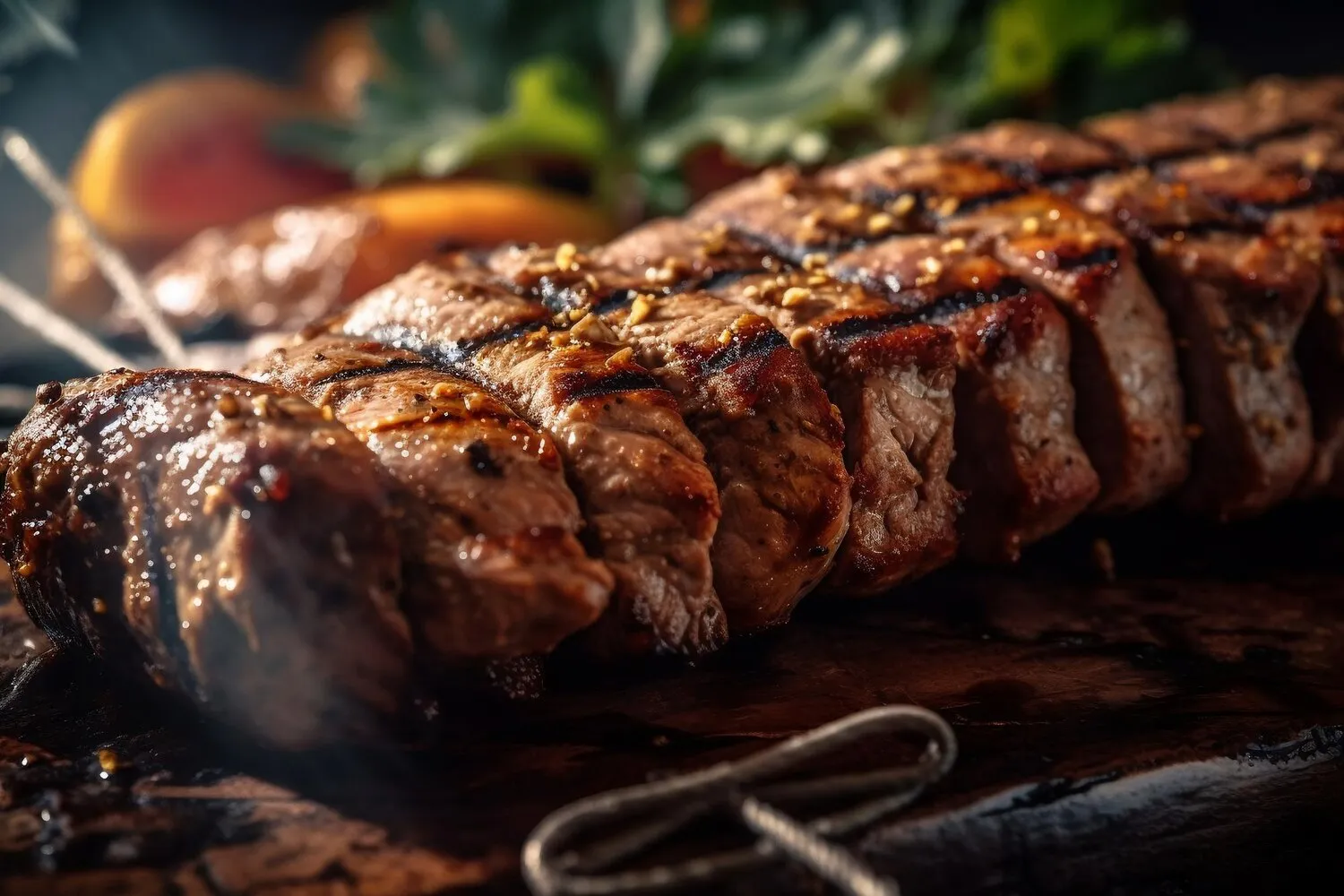
Churrasco
Brazilian barbecue with a variety of grilled meats.
Nutrition Facts
* The % Daily Value (DV) tells you how much a nutrient in a serving of food contributes to a daily diet. 2,000 calories a day is used for general nutrition advice.
Alazao
Churrasco's roots lie in the traditions of the 'gaúchos,' South American cowboys, primarily from the Pampa region spanning parts of Brazil, Argentina, and Uruguay. Roasting meat over open fires was a practical way for these nomadic herdsmen to cook their meals while on the move. The simplicity of the method and the availability of cattle made it a staple of their diet, eventually evolving into the churrasco we know today.
Churrasco is more than just a meal; it's a social event and a significant part of Brazilian culture. It is often associated with celebrations, gatherings, and a sense of community. The communal aspect of sharing grilled meats is central to the experience.
Social Gathering
Churrascos are frequently held for family gatherings, birthdays, and other special occasions. It is a time for people to come together, share stories, and enjoy each other's company.
Rodízio Style
The 'rodízio' style of service, where servers continuously bring skewers of meat to the table, is a popular representation of churrasco and embodies the abundant and generous nature of Brazilian hospitality.
Sunday Tradition
For many Brazilian families, a Sunday churrasco is a beloved tradition. It's a relaxed and informal way to spend quality time together.
Churrasco is characterized by its deeply savory and smoky flavors, derived from the high-heat grilling of various cuts of meat. The primary seasoning is usually coarse salt, allowing the natural flavors of the beef, pork, chicken, and other meats to shine through.
The flavors range from the rich, fatty taste of picanha (rump cap) to the more robust and intense flavors of ribs or sausages. The smoky notes are imparted by the charcoal or wood used in the grilling process. The simple seasoning of coarse salt enhances the inherent taste of the meat, creating a satisfying and uncomplicated culinary experience. Variations may include marinades with garlic, herbs, and vinegar, adding layers of complexity, but traditionally, simplicity is key.
Meat Selection
Choose high-quality cuts of meat with good marbling for optimal flavor and tenderness. Picanha, ribeye, and filet mignon are popular choices.
Salt Application
Use coarse salt liberally, applying it shortly before grilling. This helps to create a flavorful crust and enhances the natural taste of the meat. Avoid using fine salt, as it can over-salt the meat.
Grilling Technique
Grill the meat over high heat to sear the outside and lock in the juices. Rotate the skewers frequently to ensure even cooking. Use a meat thermometer to monitor the internal temperature and avoid overcooking.
Resting the Meat
Allow the meat to rest for a few minutes after grilling before slicing. This allows the juices to redistribute, resulting in a more tender and flavorful result.
Explore additional Brazilian Barbecue dishes and restaurants
Explore Brazilian BarbecueDiscover top dining spots and culinary experiences in Macaé.
Explore MacaéLearn more about the food culture, restaurant scene, and culinary heritage of Brazil.
Explore Brazil
